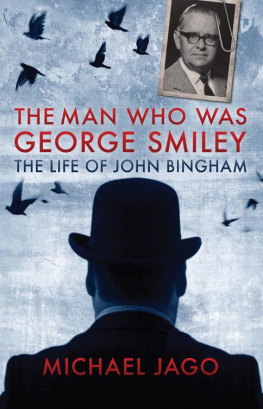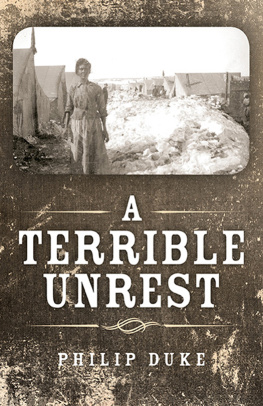I am grateful to everyone who helped me assemble this biography of John Bingham, 7th Baron Clanmorris of Newbrook. In truth, it was a pleasant task as no one had anything but good to say about him. Above all, the assistance given to me by his children, Simon, the 8th Baron Clanmorris, and the Hon. Charlotte Mary Thrse Bingham, has been invaluable. Together with Gizella, Lady Clanmorris, and Charlotte Binghams husband, Terence Brady, they provided me with a framework and were assiduous in spotting errors of emphasis and fact throughout the process.
Of John Binghams friends and colleagues, I was helped greatly by his goddaughter Rosy Burke (ne Denaro), Livia Gollancz, Maureen Johnston and the late Arthur Spencer. Their reminiscences and insights gave me an understanding of a multifaceted man.
In my researches I must single out Chara Connell of Orion Publishing who rashly offered to commandeer the photocopier to reproduce documents from the Orion archive. At Boston University, Adam Dixon tirelessly wheeled boxes of documents lodged in the Howard Gotlieb Archival Research Center. At Cheltenham College, Jill Barlow was an accomplished sleuth in helping me identify the schoolmaster Ackersley from John Binghams first novel. And I am delighted that the daily sifting through 1930s and 1940s issues of the Hull Daily Mail and the SundayDispatch did not prevent my indefatigable research assistant Tess Harris from earning her first-class degree.
Several people contributed valuable comments after reading the manuscript. Of these I am particularly grateful to Frances Burton, Janey Burton, Captain Seth Johnston (US Army), Chris and Frances Pye and Adam Sisman, biographer of David Cornwell, as well as my son and daughter-in-law James and Dr Elizabeth Jago. The latter helped further in explaining the nature of a specific phobia, an ailment that John Bingham suffered from. Further medical information concerning transient ischaemic attacks was supplied by Juliet Jamieson. Alysoun Sanders at Macmillan opened her archive and facilitated my research. For their help in recreating the young John Bingham through the eyes of their father Jacques de Moncuit de Boiscuill I am indebted to Herv and Geoffroy de Moncuit in the village of Tigy in the Sologne. Their mother, Mami, also helped with her memories of political discussions in pre-war France.
For constant encouragement I am indebted to my agent Andrew Lownie. At Biteback Publishing, Mick Smiths laconic comments and more expansive advice from my editor Hollie Teague have transformed the writing of my first book from a mere task to an exciting project.
The customary formality is to thank ones wife for her support. My wife Carol has lived with this project for almost two years and has unstintingly contributed her editorial skill and calm wisdom so this expression of gratitude is greatly more than a formality.
I t was mid-afternoon before the agent was able to leave London. There had been a panic about two spies who, the Abwehr suspected, had been turned by MI5, the British Security Service. Since the cancellation of Operation sea lion and, more markedly, since the launching of BARBAROSSA , the invasion of the Soviet Union on 22 June, the infiltration of German spies into Britain had slowed to a trickle. Moreover, the flow of refugees from western Europe had eased after the panic-filled days of July and August 1940, and MI5 was now able to free resources and focus more on weeding out German agents already in Britain. When the invasion scare had been at its height after the fall of France in 1940 and the sheer volume of refugees from France, Belgium and the Netherlands had occupied all the British interrogators at the reception centres, Abwehr agents had been able to move about Britain more easily. All that had changed by November 1941.
The agent shivered and pulled his travelling rug around him. This month had brought the worst weather since the winter of 1843 and, as he headed north on the A5, his thoughts turned to the soldiers in the army group centre engaged in the Battle of Moscow, which had started a week before. Over there the temperature was minus 12 centigrade and the 3rd Panzer Group was lurching east towards the Moscow Canal, hampered by a supply crisis that had slowed it down since October. However cold it was in England, it was nothing compared with what the Wehrmacht was being subjected to on the Eastern Front.
Finally, he was out of Londons northern suburbs with a clear road ahead. As he passed the road to Coventry, he cast his mind back a year almost to the day, to 14 November 1940, the night that 515 bombers of Luftflotte3 had carried out Operation MONDSCHEINSONATE and smashed one of the principal manufacturing centres of the British war effort. A new word, coventriert, had entered the German language after that raid. Reichsminister Goebbels now talked of cities being coventried . That was a night that the British would take a long time to forget.
He was a natural agent, thirty-three years old, unglamorous, stocky, slightly above average height, taciturn, a patient listener. He spoke fluent English as well as German with a compelling, mellifluous voice, and had that ability all the best agents have: to efface himself, to vanish into a crowd. People thought of spies as being exotic, demonstrative, he reflected, while he was the opposite. Mild, almost shy, he took pride in being a forgettable man, someone who could pass unnoticed among his fellows.
He would need to be unnoticed tonight, he thought, if he was to get what he wanted. His appointment outside Stafford was at 7:30 p.m. and he needed to park his car in the outskirts of the town and walk a mile and a half through the early snow, anonymous , unremarkable, to meet Irma Stapleton when she left the factory. He checked his watch. More than halfway to Stafford with two hours before he met her. If the snow didnt get worse, he was in good time.
He thought ahead to the meeting. If Stapleton was telling the truth which he knew was a rare commodity in his world she would bring him a 22-millimetre Oerlikon shell, which the factory was manufacturing. He had also sent a secure message to her to bring the details of the location of the Royal Ordnance factory and of the several factories around Stafford owned by Wades Chain Garages, together with their production figures, if possible. If he succeeded in getting hold of these, he reckoned, the drive from London would have been worthwhile.
He was in Stafford by 6:30 and the streets were quiet in the blackout. The shift changed at the factory at 7:00 that Wednesday night and Stapleton had a ten-minute walk to their rendezvous. Stepping out briskly, he was at the meeting point by 7:25.
When Stapleton arrived, she looked about her cautiously before digging in the bag she carried. She had brought everything he had asked for: a map with the location of every Wade plant, their production figures and, as she had promised, an Oerlikon 22-millimetre shell, as well as a two-pound anti-aircraft shell igniter and a 22-millimetre shell base plug.
As Irma Stapleton handed them over to the agent, three burly men appeared from the shadows and handcuffed her. The agent turned to flee but he too was almost effortlessly overpowered and handcuffed. The men identified themselves as officers of the Special Branch of the Metropolitan Police.
Screaming that she was a loyal British subject who had been approached by German Intelligence, Stapleton pointed at the agent and denounced him. She had gone along with the meeting, she protested, only in order to hand him over to the police as soon as she had the chance. She was innocent; the agent had come from the Abwehr, from the










